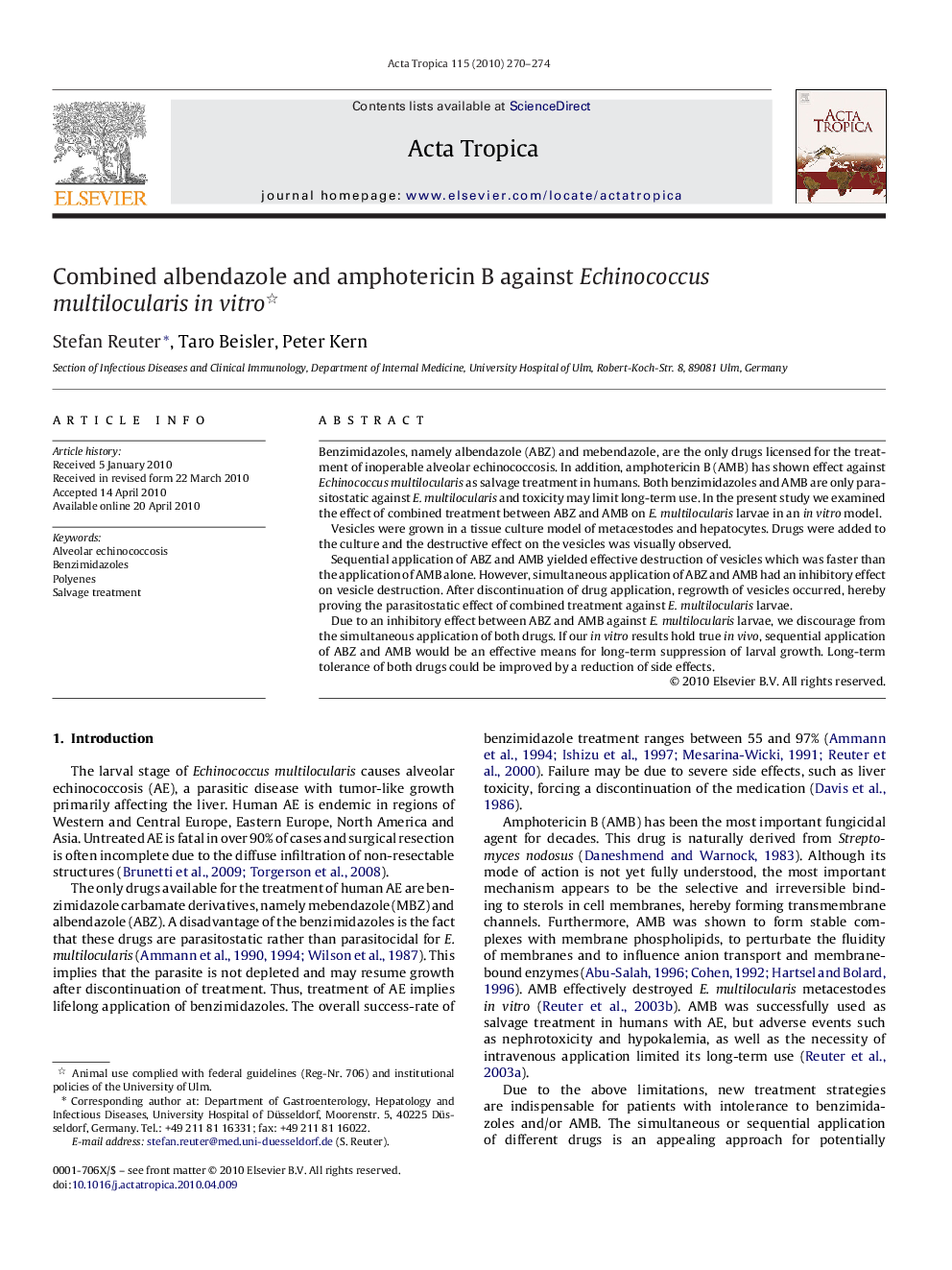| Article ID | Journal | Published Year | Pages | File Type |
|---|---|---|---|---|
| 3394124 | Acta Tropica | 2010 | 5 Pages |
Benzimidazoles, namely albendazole (ABZ) and mebendazole, are the only drugs licensed for the treatment of inoperable alveolar echinococcosis. In addition, amphotericin B (AMB) has shown effect against Echinococcus multilocularis as salvage treatment in humans. Both benzimidazoles and AMB are only parasitostatic against E. multilocularis and toxicity may limit long-term use. In the present study we examined the effect of combined treatment between ABZ and AMB on E. multilocularis larvae in an in vitro model.Vesicles were grown in a tissue culture model of metacestodes and hepatocytes. Drugs were added to the culture and the destructive effect on the vesicles was visually observed.Sequential application of ABZ and AMB yielded effective destruction of vesicles which was faster than the application of AMB alone. However, simultaneous application of ABZ and AMB had an inhibitory effect on vesicle destruction. After discontinuation of drug application, regrowth of vesicles occurred, hereby proving the parasitostatic effect of combined treatment against E. multilocularis larvae.Due to an inhibitory effect between ABZ and AMB against E. multilocularis larvae, we discourage from the simultaneous application of both drugs. If our in vitro results hold true in vivo, sequential application of ABZ and AMB would be an effective means for long-term suppression of larval growth. Long-term tolerance of both drugs could be improved by a reduction of side effects.
Graphical abstractDue to an inhibitory effect between albendazole and amphotericin B against Echinococcus multilocularis larvae, simultaneous application is discouraged. Sequential application of albendazole and amphotericin B yielded effective vesicle destruction.Figure optionsDownload full-size imageDownload as PowerPoint slide
